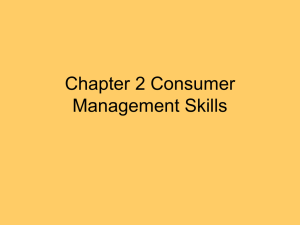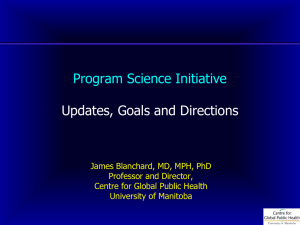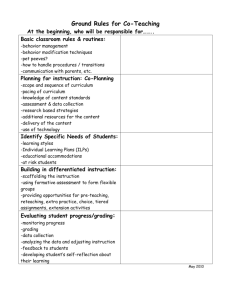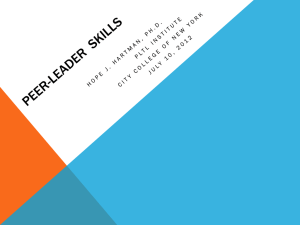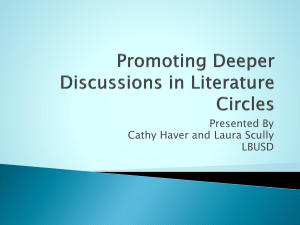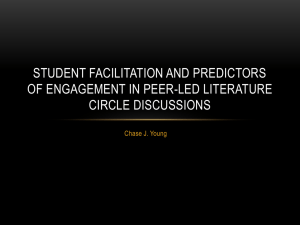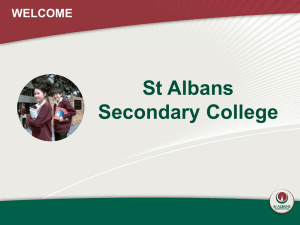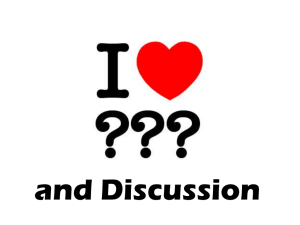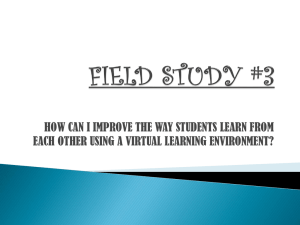Chapter 9 using problem solving to resolve behavior problems
advertisement
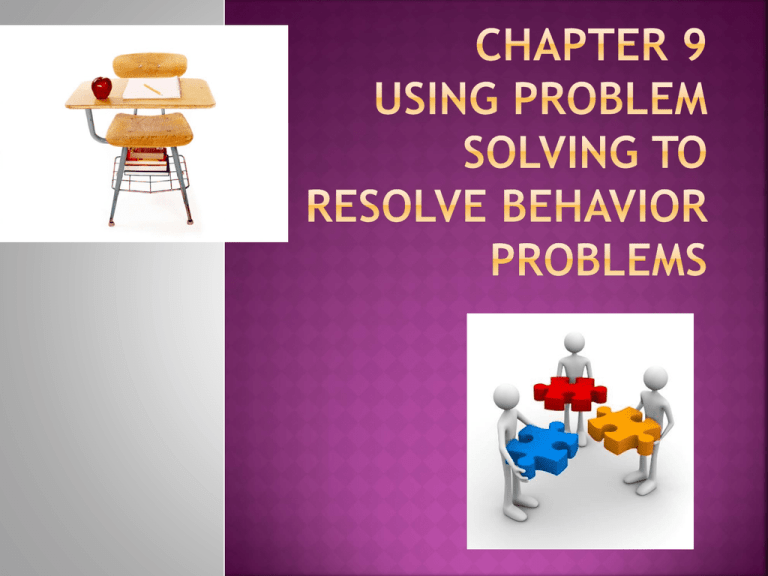
“People take time. Dealing with discipline takes time. Children are not fax machines or credit cards. When they misbehave, they tell us that they need help learning a better way. They are telling us that there are basic needs that are not being met which are motivating the behavior. “ –Allen N. Mendler How to use problem- solving methods with students in order ton develop effective solutions to ongoing academic and behavior problems How to resolve a conflict between two or more students How to conduct an effective class meeting. Persistent behavior disrupts the learning environment and problem solving allows students to accept greater responsibility for their behavior and learn citizen skills. It is a major cause for teacher concern and one reason teachers leave the profession. In order to effectively assist students, we need the clearest understanding of how students view a situation. In order to be successful, authority requires the need to connect in a caring way by inspiring hope within others and lead one’s own life in a way that models that attitude. Remember, our students are human beings first. Alternative solution thinking- The ability to generate solutions to the problem Consequential thinking- The ability to consider the consequences that a behavior might lead to. Casual thinking- the ability to relate one event to another over time with regard to why an event happened or will happen. Interpersonal sensitivity- The ability perceive that an interpersonal problem exists Means-ends thinking- step by step planning to reach a goal Perspective taking-the ability of the individual to recognize and take into account that different people have different motives and may take different actions 1-Establish a warm personal relationship with the student 2-Deal with present behavior 3-Make a value judgement 4-Work out a plan 5-Make a commitment 6-Follow up 7-No “put-downs”, but do not accept excuses. http://goanimate.com/movie/07GnhRDTyd3 U?utm_source=linkshare&uid=0wwsroAcWEi8 1- Provide the students with a handout of the steps. Place where students can see it clearly 2-Discuss each step and provide and example. 3-Role-play several situations in which an student misbehaves and the teacher uses this method for assisting the student in taking responsibility for the behavior. 4-Lead a discussion following each role-play. 5- Have students practice by taking the role of both student and teacher. 6-Process these interactions 7-Provide the class with an example of a violation and have each student write a problem solving plan. 8-Have students share and assist the class in evaluating and modifying several plans. 9-Explain how the problem solving process relates to the classroom management plan 10-Quiz students on the steps in the sequence and the problem solving plan. Teacher facilitated Peer Conflict Resolution: Book suggests using the think-feel-act model. Teacher allows students to take turns stating their account of what happened, how they felt and what they believe needs to be done. After each statement, the other student paraphrases the statement, so each student feels heard and understands the other person’s point of view. Benefits Include: A class meeting allows both the teacher and the students to resolve problems openly before they become major issues that affect learning. Provides students an opportunity for improving their social and problem solving skills 1-Clearly state the problem and stick to the agenda. 2-Brain Storm Solutions 3-Select Solution In an elementary setting, it should last about 15 minutes. Teacher will serve as a facilitator for the meeting They should be held whenever the agenda indicates a meeting is necessary. Should be held in a tight circle with all participants seated in a circle All problems relating to the class may be discussed. An agenda should be created prior to every class meeting. Author suggests placing the topics on a clip board for students to sign and agree upon. Discussions should always be directed towards arriving at a solution, not a punishment. All items must be cleared with the students before discussion. Ex: an individual student’s behavior. Students should be informed that several options are available to those who choose not to have their behavior discussed. Clearly Post student’s responsibilities during class meetings: A-Raise hands before being called on to speak B-Listening to the speaker and not talking while someone else is speaking. C-Staying on topic until it has been completed D-Being involved by sharing ideas that will benefit the group E-Use positive and supportive words to discuss the problems and solutions To keep momentum going, discuss functions of a leader in discussions. Inform them that they will lead their own discussions. Introduce an agenda, when the class discusses this problem, point out an define each intervention you make. Give class meeting “roles” (pg 349) to master social skills associated with these roles -Discussion Leader -Task Observer -Behavior and Feeling Observer Are the models shown effective? Have you used or have been part of a classroom meeting? Would you use one in your classroom? What suggestions would you make to have a meeting run smoothly.
